We have all had the unpleasant experience of weird white stuff oozing out of our salmon after baking or cooking it. Have you wondered if you can eat it? Does it mean the fish is bad? We can answer all your questions and help you banish it forever! By learning how to brine your fresh salmon in 10 minutes!
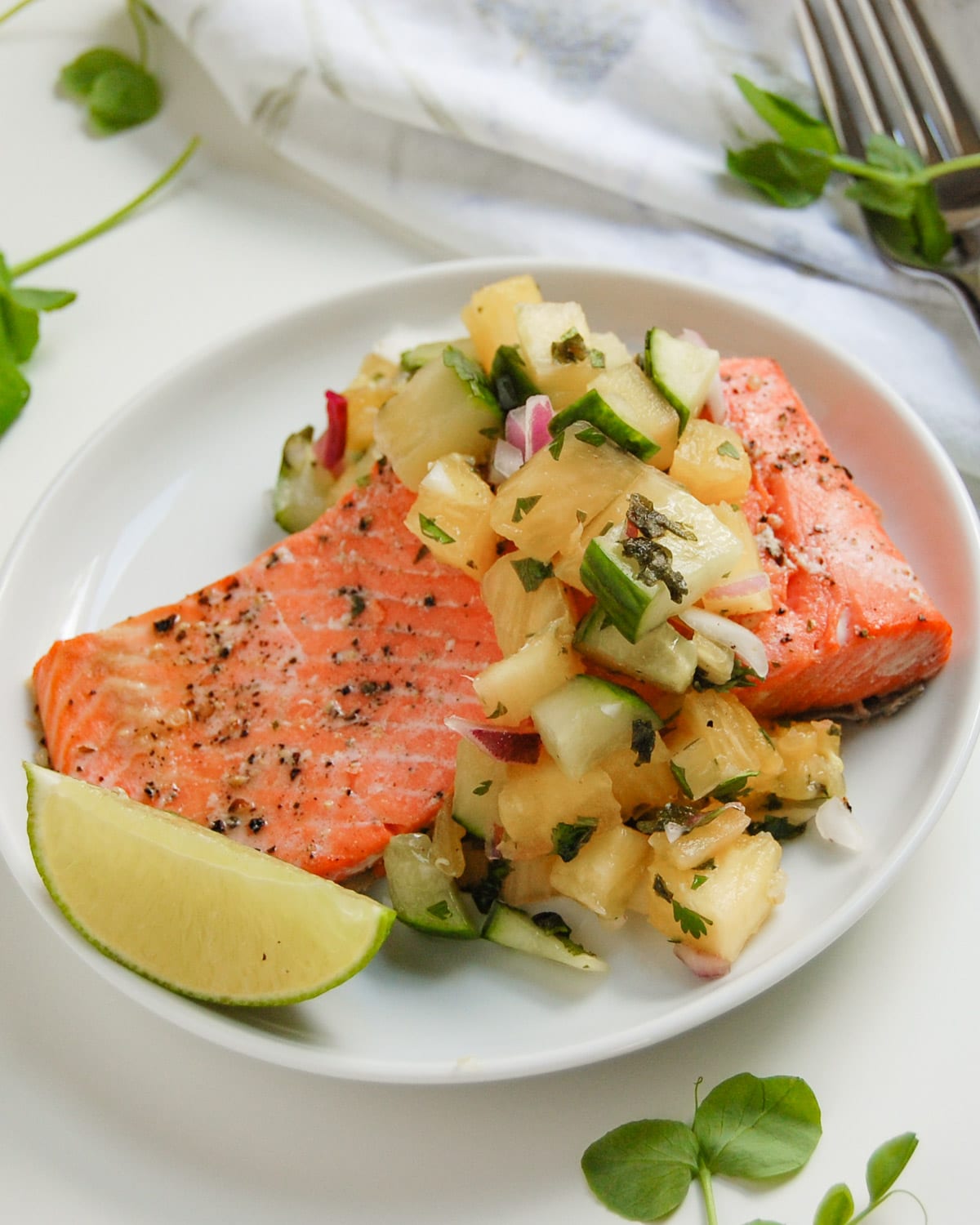
This post may include affiliate links. Please read my disclosure policy.
Jump to:
You have probably heard of smoked salmon brine, where you use dry brine or wet brine to infuse flavor.
But when doing a traditional cooked salmon, salmon brine is not as popular. But it should be!
📖Why This Recipe Works
There are two ways to remove the white film, a protein called albumin, first is to quick brine it and the other is to cook it low and slow.
And while slow and low is fine, not all recipes follow that format. Soaking salmon in brine is a quick and easy way to stop the white stuff on salmon!
For this recipe, you need kosher salt. Do not use table salt.
How to Quick Brine Salmon
Make a brine solution with 1 tablespoon of salt per 1 cup of water ratio. The water should be tepid.
Stir to dissolve. Place the salmon fillets in a shallow baking dish and cover them with the brine solution. Allow the salmon to soak for 10 to 20 minutes.
Some readers have reported that 20 minutes causes the fish to be too salty. You can always rinse off the salmon once you remove it from the brine.
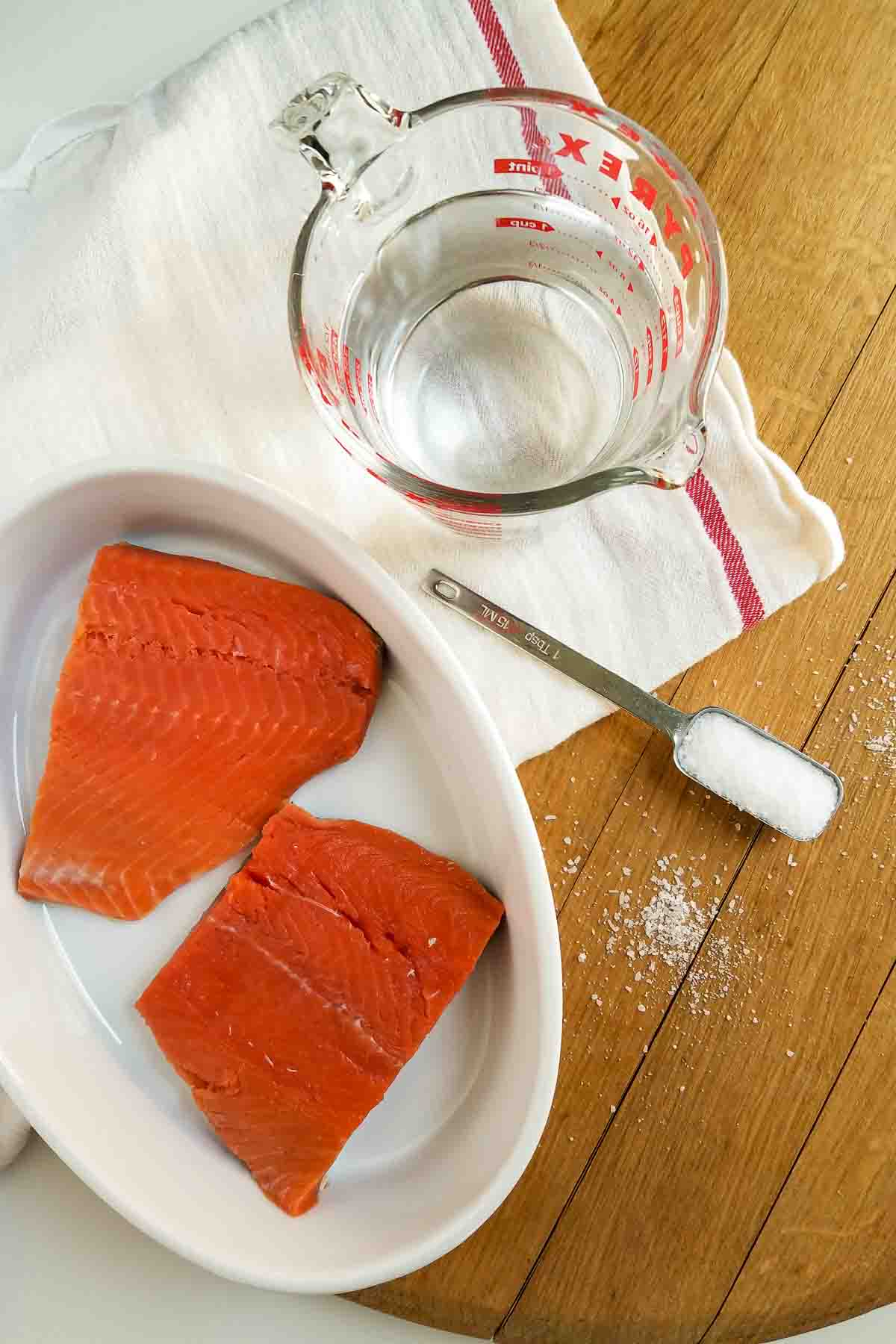
After brining the fish, remove the fillets from the water and pat them dry with paper towels. I like to lay the fish out for 15 minutes on a wire rack on a baking sheet. to ensure both the top and bottom are dry.
If the fillets are wet when you begin cooking them they won't hold onto the seasoning or brown properly. This is especially important if you want the skin to crisp up.
Also, be sure to check out our tutorial on how to brine chicken!
👩🏻🍳 Expert Tip
Try your roasted salmon with one of our favorite healthy sauce recipes. Many take less than 10 minutes!
How to Roast Salmon
Seasoned per your recipe, or just salt and pepper. Place on a rimmed baking tray in a 425 F degree oven for 6 to 8 minutes.
The low and slow cooking option is less than 300 F degrees for 10 to 15 minutes, depending on the size and thickness.
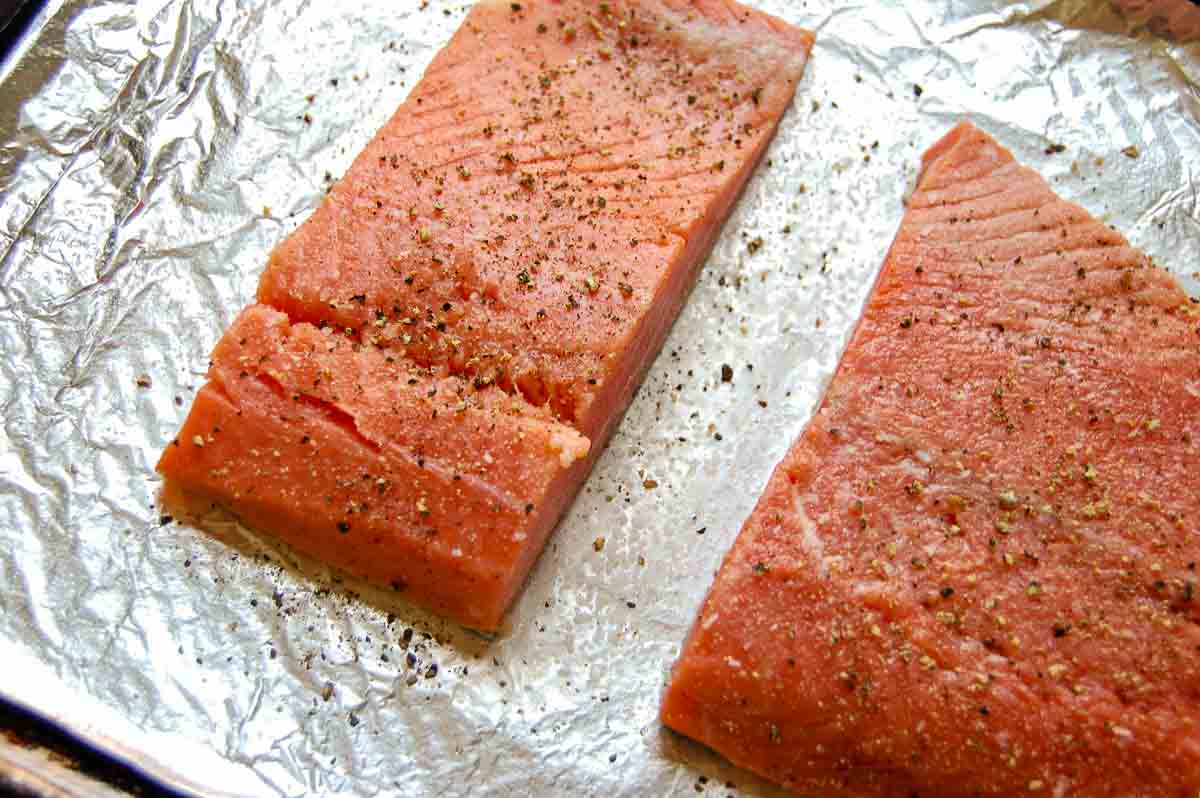
These temperatures and times will result in medium rare salmon. You can roast longer for your desired doneness.
Try this roasted salmon with pineapple salsa for a quick weeknight meal that feels fancy!
🌡️Storage and Food Safety
Raw salmon should be kept in its original packaging in the refrigerator for 1 or 2 days before cooking or freezing. After cooking, store salmon in an airtight container in the refrigerator for 3 to 4 days.
Any frozen fish will be safe indefinitely; however, the flavor and texture will lessen after lengthy storage so it is recommended to thaw and cook your fish within 1 to 2 months.
Sauce Recipes for Salmon
💬Frequently Asked Questions
The white/ grey substance that often appears on salmon after it is cooked may look like fat‚ but it is actually a protein. More specifically albumin. Not to be confused with albumen, which is what eggs whites are.
Absolutely! It is just part of the fish's protein composition and is fine to eat.
If you don’t like the way it looks you can wipe it off. But remember you are also wiping off the seasoning. We suggest you prevent it from forming in the first place.
There are two schools of thought. Soak in a brine solution or cook low and slow. The brine solution is the most effective for all salmon cooking methods.
However, the longer you cook salmon the more white stuff you will get. Overcooking the fish will result in more albumin. By cooking your fish to medium-rare, 125F degrees, you will see less than a well-done piece of fish.
Additionally, a heavy glaze or crust on the fish will cover up albumin so you can't see it, but it will still be there.
Did You Enjoy Making This Recipe? Please rate this recipe with ⭐⭐⭐⭐⭐ or leave a comment. It helps other wonderful people connect with my food.
📖 Recipe Card
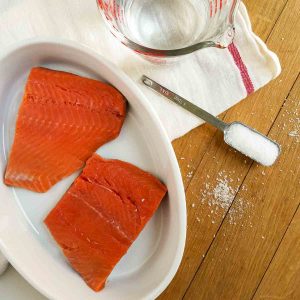
Salmon Brine
Ingredients
- 4 salmon filets
- kosher salt
- water
Instructions
- Place salmon in a shallow dish or pan. Cover with water, adding 1 tablespoon of kosher salt for every cup of water. Place in refrigerator for at least 10 minutes.4 salmon filets, kosher salt, water
- Remove salmon from the brine. Rinse and pat dry. Place salmon on rimmed baking sheet. Prepare salmon according to your recipe directions.
Video
Notes
- You can leave the brine overnight but most people report a very salty flavor. Rinse it well before using.

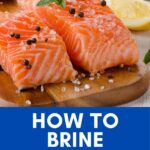
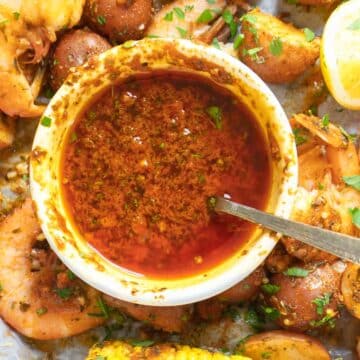
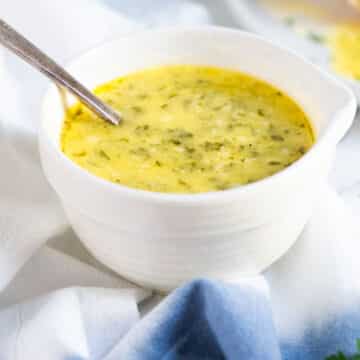
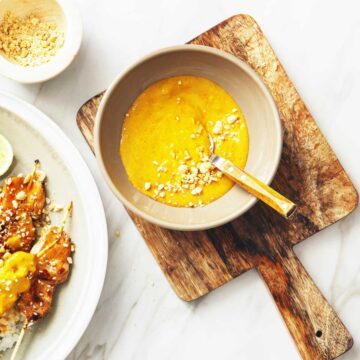
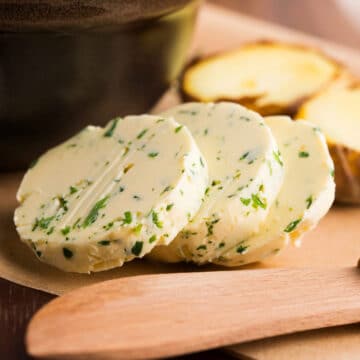
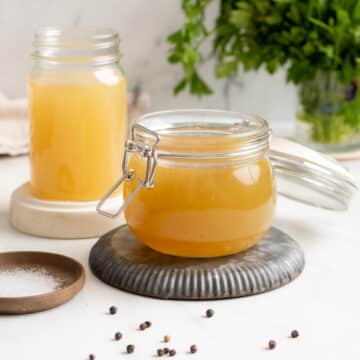

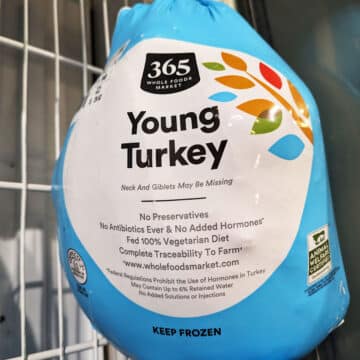
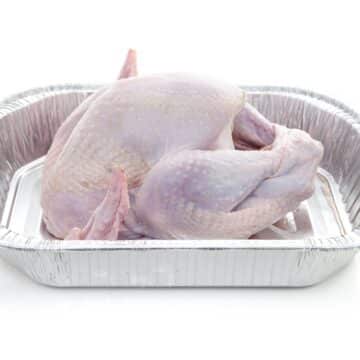
J A says
It was way too salty.
Shawna says
Brined my salmon overnight and it was way too salty.
Jen says
Thank you for the feedback.
MK says
The authors state 10-20 minutes. More is not better.
Mat McLelland says
For an overnight brine you use less salt ratio.
Erika says
I've never tried brining my salmon before, but I love this idea!
Jen says
I'm excited to try this! I have salmon out in my deep freezer in the garage that I've been meaning to make. Thanks for the inspiration to pull it out and try it.
Ashley says
Oh yum!! I love briney anything!!
Marc says
Great pro tip! There's nothing wrong with the white stuff, but it does look unappetizing, and besides, brining makes the salmon taste better!
Mary Nina Yamaki says
Growing up in Japan we ate a lot of fish including salmon and never had this white stuff oozing out of salmon till I start to living in the US. I leaned in Japan when salmons were caught they are thrown into freezing cold salt water on the ship immediately. I prefer to buy salmon in Japanese market in Los Ángeles because of this reason.
Jen says
Oh wow that is so interesting. Thank you so much for sharing!
Denay DeGuzman says
What an excellent guide for brining salmon to get rid of the white stuff! Thank you so much for sharing this quick and easy technique.